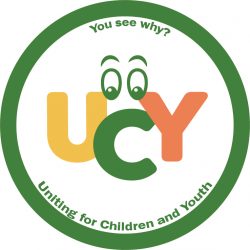
by Richard Fransham
Public schools most serve their purpose when they are the hubs of their communities. They can establish a sense of belonging for families and the kinds of relationships that contribute to the well-being of a community. It follows that school closures can be wrenching experiences that set people adrift, and this is particularly true for the most vulnerable. The social cost, that of destabilizing people’s sense of belonging and well-being, needs to be treated as the primary concern when schools are being reviewed for closure, and something to avoid in most cases.
This article is not an argument against school closures per se, but rather it is an effort to open people’s imaginations to alternatives to closures, alternatives that preserve community, increase benefits to students and reduce costs. It sounds too good to be true, but it is what changing the education paradigm offers to do.
Larry Rosenstock, a founder of the successful High Tech High network of charter schools in California, says that the greatest impediment to educational innovation is the formal school schedule, the dividing of the school day into fixed chunks of time. It produces what is called assembly line learning, and eliminating it is essential to properly addressing the problems that lead to school closures. This is perhaps most evident in how secondary schools operate.
It is a commonly held view that for secondary schools to be viable they need a minimum enrolment of about 800 students. This is the number that permits a traditional school to provide the range of course options considered necessary for a good education. When the numbers drop below this threshold, schools can be at risk of closure. With higher enrolments more course options can be offered allowing more students to pursue topics of interest. This has fostered the thinking that bigger is better, which results in consolidating schools with low enrolments into larger ones, and this creates another social cost. Anonymity creeps in as schools increase in size, making it increasingly difficult for students to feel that their schools are communities rather than factories, and increasingly difficult for teachers to cultivate the kinds of relationships well known to be at the heart of student engagement in learning. Some estimates are that anonymity begins to manifest itself when numbers exceed 250. Another estimate is that when students enrol at a young age and there is little attrition, a school could have as many as 450 students without creating anonymity.
If anonymity were not a problem, there are sufficient other reasons to move away from formal scheduling. Even in larger schools, it limits the number of ministry courses available to students. It is common for students to be lined up outside the guidance office in September waiting to have their timetables revised, because courses they chose were cancelled due to lack of interest. There is a stereotyping affect at play in that students can only take courses of interest to a sufficient number of other students. It is an affect that diminishes diversity and works against the interests of minorities and children who don’t fit the norm. It also happens on a regular basis that students who enrol in options that are cancelled end up being required to take courses in which they have no interest. It is a flexibility problem that also affects teachers who are assigned to teach courses outside their areas of interest and expertise, because they need to be given a full schedule and it can’t be done otherwise. This aggravates the problem of equity. The subject expert can be teaching one group of students, while another group taking the same course is taught by someone with no expertise, and who may not want to even be there. It is a situation where one group can be turned on to a subject, while another is being turned off. Formal scheduling also plays havoc with the integration of subjects. It results in subjects being studied in isolation, which limits how creatively students can apply the knowledge.
A further consequence of formal scheduling, one that is counter-productive to cultivating a healthy democracy, is its propensity to create a class system of winners and losers. Winners take advanced math and the sciences; losers take general math and the trades. This is a disservice to both groups. It causes discrimination that reduces the joy of living, and it influences what students consider appropriate to study, thereby limiting students’ worldview and their potential enjoyment of learning.
To get beyond formal scheduling, we need to accept that students want what is best for themselves. When we see them behaving inappropriately, it is usually because they are feeling too controlled or they have a lesson to learn about what is acceptable. If it is a lesson to be learned, then there is a teachable moment, but if it is a matter of control, then theories on the locus of control need to be considered. Evidence is mounting that the locus of control has to be intrinsic for student engagement, that students need to have more control over their learning. Formal scheduling by design is controlling. It results in students being told where to be, where to sit, what to learn, how to learn it, whom to work with, when to talk, when to go to the washroom, and so on. It can be highly frustrating and those not inclined to succumb often lash out. Research is also showing that a lack of control over one’s life is a major contributor to anxiety and depression, and so while educators are dedicated to providing for the well-being of students, the structure is working against them. There are even discussions about a lack of control being a major contributor to bullying. The Ontario Education Act states that bullying “occurs in a context where there is a real or perceived power imbalance.” It is referring to an imbalance of power among students, but in a system where adults power over students, relationships built on respect and equality are not being adequately modelled. The frustration of being too controlled coupled with power-over relationships between teachers and students is likely a contributor to students trying to power-over each other in ways that manifest themselves as bullying.
Learning environments free of the bells make it possible to create community learning hubs where students can have substantially greater control over what and how they learn. More control means more responsibility, which translates into having to be more responsible. Being more responsible for one’s learning also creates better conditions for students to acquire the skills essential for independent lifelong learning. And when students become more responsible for their learning, teachers become facilitators of learning, as opposed to the dispensers of it, which leads to genuine relationships needed for a healthy society.
The process of eliminating formal scheduling needs to begin immediately, and the thing that makes it most pressing to act now is school closures. Community learning hubs can be any size, and like the one-room school house the learning can be diverse and rich. By learning how to operate these hubs effectively, we can overcome the problem of low enrolments and secure the future for schools at risk of closure.
The pilot program promoted by the Ottawa Public Education Remake Initiative (OPERI) is recommended as a starting point for a grounded theory approach to change, where ongoing systematic research leads to systematically transitioning to learning environments free of formal scheduling. This pilot program has been successfully conducted in an Ottawa secondary school. It runs for one semester with 25 students in their community school. Students and teachers choose to participate, and no additional funding is required. Students still acquire four ministry credits needed to graduate, but the emphasis is upon developing the skills required for independent, lifelong learning. This is done in an environment that fosters a caring community where everyone is a learner and a teacher. By witnessing this program, people will find that their imaginations open to extensive learning possibilities and how change can be conducted as an incremental process where people choose to participate, as they feel ready. They will also begin to appreciate the enormous cost savings to be gained by moving to a system that does not require the substantial resources put into timetabling – including the lost learning time involved, and where better relationships greatly diminish the costs of disciplining students and of dealing with the mental health issues of both staff and students. This program is designed for secondary schools, but the concept can be adapted for elementary schools. For more details, visit the OPERI website, and feel welcome to contact us for more information.


Too much possibly to comment on fully here – stimulating!
Having a cross-disciplinary and integrated focus for HS courses makes sense and naturally should provide higher order value to students, provided critical building block basics are ensured also. Our alt elem schools provide some of this but there are curriculum and system cultural barriers to overcome even for them.
At the HS level we have the IB program for the few admitted to it but its focus is avowedly to integrate across courses. We need to ask ourselves strategically why we have this program or that one – how can we make certain IB ideas work for all HS students, not just a select few if course integration is so great? How can we make alt ed elem precepts and practices, including welcoming combined grades (provided teaching staff are sufficiently trained and supported), get accepted more broadly in the ‘regular’ schools, and overcome grade-based curriculum expectations for harried staff?
Agree pathway streaming makes little sense: students should be able and encouraged to combine GR12 physics with a shop course if they want to and not squeezed into silos. This may mean treating our HS facilities more as campus buildings than fiefdoms.
Alt ed in the elem programs is about self-directed learning ideally also but this is not always the practice even there. The OCDSB has no designated similar alt ed program at the HS level and could perhaps use one. Other big cities (e..g TDSB) do. However, I’m also leery of spreading our fire too thinly when even our established alt ed elem programs may be struggling and may not be used or even fully seen as the bleeding edge lab schools they could be, benefiting the whole system in the end, and of service to all.
I’m leery of privileging a few with great value-added academics and teaching. Its why I believe that if we have an alt ed elem, or one day maybe alt ed HS program, then it has to be about mining it deliberately and accountably for fruits for all students. We struggle to do this now.
Do enough renaissance teachers, also able to support each student in exactly the right way, and comfortable across a wide-range of curricular areas, exist to roll out such programs universally? What is the game plan? Is this only for self-starters and winnowed ‘problem-free’ students? How is democratization guaranteed?
These are all potent and exciting ideas certainly, but we need as well to look at system benefits and how such proposed initiatives might fit into a wider game plan. I look forward to engaging genuinely with them.